The Latest VR Headsets of 2021: Key Innovations
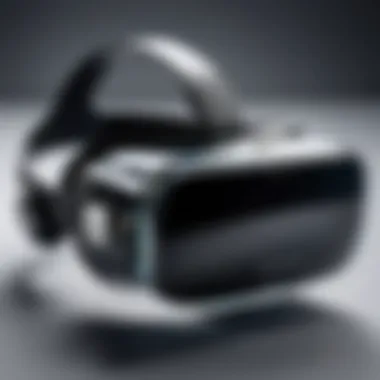
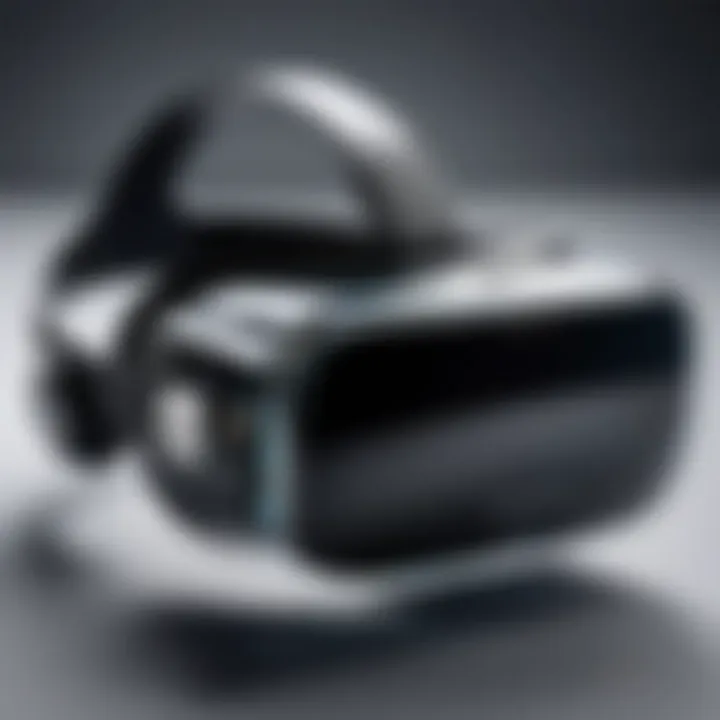
Intro
Virtual Reality (VR) technology has come a long way since its inception, transitioning from clunky prototypes to sleek, sophisticated headsets. This transformation has opened up numerous avenues across various sectors, especially within the realm of information technology. 2021 marked a significant year for VR with many companies releasing headsets that boast improved capabilities, greater resolution, and immersive experiences that push boundaries.
As IT professionals or tech enthusiasts delve into this topic, understanding the nuances of the latest VR headsets is more crucial than ever. This article aims to unravel the complex weave of innovations in VR technology and the implications these gadgets hold for diverse professional environments. By examining the key features, performance metrics, and unique selling points of established market leaders as well as up-and-coming contenders, we provide a comprehensive analysis that can assist in making informed decisions.
Let’s dive right into the features that set 2021's VR headsets apart from earlier models and each other.
Foreword to Virtual Reality
Virtual Reality (VR) is not just the latest buzzword in technology; it represents an entirely new way of experiencing and interacting with digital content. As we navigate through this vast landscape, understanding the core elements of VR becomes imperative for both users and developers. This section aims to shed light on the definition and historical context of VR, serving as a foundational block for this article.
Defining Virtual Reality
At its core, virtual reality can be described as a computer-generated environment that immerses users in a simulated setting, allowing them to interact as if they were part of that world. More than just a game, VR engages multiple senses — sight, sound, even touch through specialized equipment. Think of it as stepping into a different realm, where the rules of reality can be bent or reshaped.
To visualize VR, consider how flight simulators work. A pilot-in-training can experience various flying conditions without ever leaving the ground. The immersion and realism help enhance their skills, a valuable asset in aviation training. Similarly, in gaming, titles like Half-Life: Alyx provide an experience that feels almost tangible, inviting players to explore a rich, interactive narrative by moving through virtual spaces.
This immersion fosters a sense of presence, making experiences available through VR uniquely compelling. As technology evolves, the gap between the real and the virtual continues to blur.
Historical Context of VR Technology
The roots of virtual reality stretch far back, well before the cutting-edge headsets we see today. The journey began as early as the 1960s, when Ivan Sutherland developed the first head-mounted display system, often referred to as the "Sword of Damocles." Though primitive by today's standards, this innovation set the stage for future developments.
Through the following decades, various forms of VR emerged, notably in military training simulations and urban planning projects. The 1990s saw a surge in public interest with those bulky headsets and the rise of arcade games featuring VR elements. However, technological limitations meant such ventures were often short-lived. It wasn't until the 2010s that VR began gaining serious traction among consumers, coinciding with advancements in smartphone technology and graphics processing capabilities.
Companies like Oculus, HTC, and Sony emerged as key players, creating systems that brought virtual reality to the masses. By 2021, VR had solidified itself within various sectors, including gaming, healthcare, education, and real estate. Its adaptability and potential for immersive learning made it vital in professional settings and at home.
"Virtual reality is a new frontier, transforming the way we engage with information, learning, and even social interaction."
Each milestone achieved along the way showcases a crucial evolution in how we perceive and harness virtual environments. Understanding this timeline equipcs us better to appreciate where technology is headed and its implications for our personal and professional lives.
As we transition toward analyzing the VR headset market, these fundamental elements will provide the necessary context for grasping the intricacies of current products and trends.
Overview of the VR Headset Market in
As we delve deep into the landscape of virtual reality, it’s crucial to examine the state of the VR headset market in 2021. The growth trajectory of this sector has not only captivated tech enthusiasts but has also become a focal point for IT professionals. The demand for sophisticated, user-friendly VR technology has influenced various industries, driving innovation and competition.
This segment will highlight the specific elements surrounding the VR headset market, focusing on trends, major players, and market dynamics. Understanding these factors helps in discerning the future trajectory of VR technology and its applications.
Key Trends in VR Technology
Increase in Accessibility
One of the most significant aspects of the VR headset market in 2021 is the increase in accessibility. Manufacturers have pushed the envelope to make VR technology available to a wider audience, moving beyond the niche of hardcore gamers to include casual users and professionals alike.
The key characteristic of this trend is affordability. Devices like the Oculus Quest 2 have set a new standard by offering standalone options that don’t require expensive PCs or additional peripherals. The benefits are apparent; more consumers can experience VR without breaking the bank, leading to greater adoption rates.
A unique feature of increased accessibility is the cross-compatibility that manufacturers have begun to embrace. This means users can easily switch between devices and experiences, providing flexibility that was scarcely available in earlier models. The advantage is unambiguous: a larger user base translates into increased interest and investment in VR content, benefiting the entire ecosystem.
Focus on Quality and Immersion
Another compelling trend is the focus on quality and immersion. In 2021, the bar has been raised in terms of the visual and auditory fidelity of VR experiences. This focus contributes significantly to the overall user experience, ensuring that interactions within virtual environments feel more natural and engaging.
The standout characteristic of this trend is the introduction of high-resolution displays and advanced audio technologies. For example, headsets like the Valve Index were praised for their superior refresh rates and audio spatialization. What does this mean for users? An engaging and lifelike experience that enhances productivity and enjoyment.
One of the unique facets of this focus is the integration of haptic feedback systems. This technology provides a tactile sensation, allowing users to feel virtual interactions, thereby increasing the sense of reality. However, increased focus on quality often comes with a cost—higher prices for premium models can be a barrier to entry for some potential users.
Major Players in the Field
Established Brands vs. New Entrants
The VR headset market of 2021 has been a battleground for both established brands and new entrants. This continuous clash enriches the landscape, pushing innovation and consumer choices.
Established brands like Oculus, HTC, and Sony have a solid foothold due to their extensive research, development resources, and brand recognition. These companies leverage their experience, producing reliable products that appeal to users accustomed to their ecosystems. The downside? Often, these brands can get complacent, relying on their legacy while newer competitors emerge with fresh perspectives.
Conversely, new entrants are shaking up the market. Startups and lesser-known companies often bring innovative ideas to the table, offering unique features that challenge conventions. They are a breath of fresh air, but their lack of established credibility can lead to hesitation among consumers.
The unique feature of this competition is the variety. Users benefit from a diverse array of choices, allowing them to find devices that fit their particular needs and preferences. This creates a dynamic where both categories—established brands and newcomers—must innovate continually, thus driving the market forward.
In summary, the VR headset market in 2021 is not just about technological advancements; it's about shifting paradigms and expanding access. As we dissect further sections, we’ll continue to see how these elements interplay and influence the broader discourse on virtual reality.
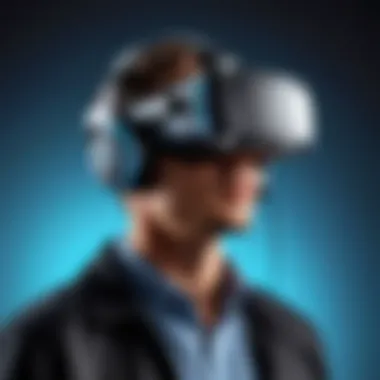
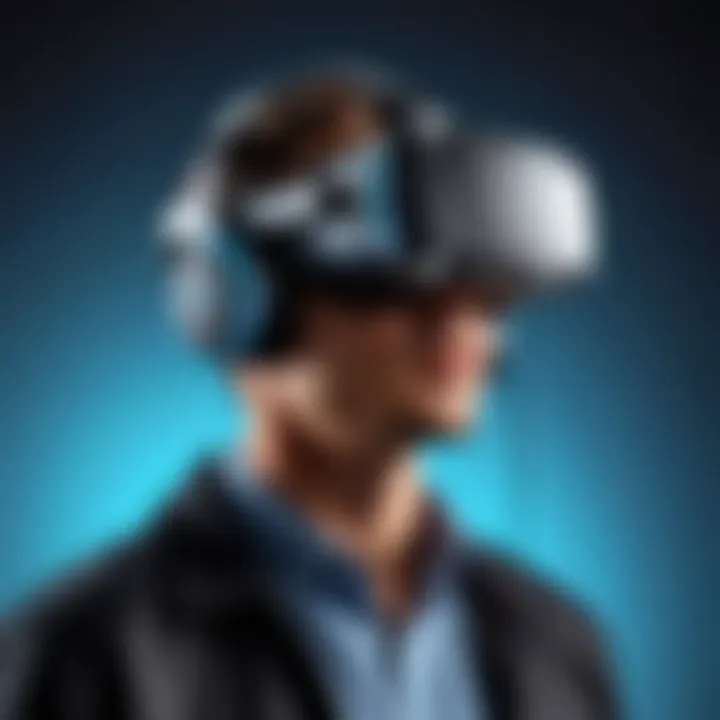
Technical Specifications of New VR Headsets
Understanding the technical specifications of the new VR headsets is essential not just for enthusiasts but also for IT professionals who plan to implement this technology in various settings. The advancements in display technology, tracking systems, and audio enhancements contribute greatly to how immersive and realistic VR experiences can be. Here's a deeper look into these specifications.
Display Technologies
Resolution and Refresh Rate
The resolution and refresh rate are pivotal when it comes to creating a smooth, immersive experience. Higher resolution translates to clearer, crisper visuals which substantially enhances realism. In the world of VR, where every detail can contribute to immersion, a clear display can make the difference between a captivating experience and a jarring encounter. The key characteristic that makes high resolution a significant choice is its ability to reduce the "screen door effect," where users perceive the lines between pixels, breaking their immersion.
A unique feature of new headsets is their ability to support 120 Hz refresh rates or even higher. This capability allows for fluid motion, which is crucial when users are in fast-paced environments like games or simulations. A faster refresh rate minimizes motion blur, providing a more enjoyable experience, especially during fast movements. However, there can be disadvantages, like the requirement for more powerful hardware to support such high refresh rates.
Field of View
Field of view, often abbreviated as FOV, refers to the extent of the observable environment in the headset. A wider FOV can enhance the sense of immersion, allowing users to feel as though they are truly enveloped in the virtual space. This characteristic is essential for experiences that require spatial awareness, such as navigational tasks in training simulations.
For many VR headsets optimized for gaming and professional applications, a FOV of 100 degrees or more is now the norm. However, broader fields of views can have their downsides. They can sometimes add to the complexity in design and calibration, and they might require more rigorous software adjustments to ensure visuals remain high quality across the broader gaze.
Tracking Systems
Inside-Out vs. Outside-In Tracking
Tracking systems are the backbone of user experience in VR. The two main types are inside-out and outside-in tracking. Inside-out tracking uses cameras on the headset itself to map the environment—this modular approach simplifies setup and decreases the need for external sensors. This characteristic has made inside-out tracking particularly beneficial for casual users or those operating in smaller spaces.
On the other hand, outside-in tracking relies on external sensors placed in the play area, which can offer improved accuracy for complex movements. This is particularly important for professional applications where precision is key, such as in design or training simulations. While the flexibility of inside-out might appeal to many, it can sometimes struggle in scenarios where the user's movements are highly advanced or complex.
Audio Enhancements
Spatial Audio
Spatial audio has become a fundamental part of the VR experience. This technology creates sounds as though they are coming from various directions in the environment, which adds a layer of realism that enhances immersion significantly. The ability to localize sounds can enhance gameplay and training simulations, making them feel more authentic and engaging.
The advantage here is that spatial audio can replicate real-world experiences, which is crucial in applications where users rely on auditory cues. Still, renditions could vary based on the headset design and even user adjustments, which might lead to inconsistent experiences.
Integrated Microphones
Integrated microphones are now common in most advanced VR headsets. They improve user interaction by allowing communication without additional equipment. This aspect is vital in professional settings, especially for remote collaboration, as it enables interactive meetings or teamwork in virtual spaces.
The integration of microphones presents unique benefits, such as seamless communication without the distraction of external devices. Nevertheless, there could be issues with audio quality and interference that users sometimes encounter, which may call for external microphones in certain professional uses.
The amalgamation of resolution, tracking, and audio features in VR headsets not only reshapes user experiences but also drives the tech industry towards greater innovation in immersive solutions.
In summary, the technical specifications of new VR headsets provide vital criteria to consider when selecting devices for either personal enjoyment or professional prowess. Each specification brings its uniqueness to the table, reflecting the balance between advanced technology and user experience.
Comparative Analysis of Top VR Headsets
The examination of various VR headsets is crucial for understanding the advancements and versatility within the virtual reality landscape of 2021. A comparative analysis allows for clearer insights into the strengths and weaknesses of each headset. This evaluation not only helps potential users weigh their choices but also indicates how manufacturers can innovate based on market feedback. Key factors like performance, usability, and unique features are fundamental in determining the headset that best fits individual needs and specific use cases.
Oculus Quest
Performance Insights
When diving into the Oculus Quest 2, one can't overlook its remarkable performance capabilities. This headset supports a resolution of 1832 x 1920 per eye, offering an engaging level of detail that is hard to rival in its price range. This clear visual output allows users to immerse themselves deeply in games and virtual environments. Its robust mobile processing unit streamlines performance too, giving it a responsiveness that can easily convince traditional gamers of its merits.
A standout feature is its refresh rate flexibility, as it can operate at up to 120Hz; this is pivotal for fast-paced experiences. This means less motion blur and smoother transitions. However, the downside is that not all content is optimized for the highest refresh rate yet, which can sometimes detract from that seamless experience.
Usability Assessment
In terms of usability, the Oculus Quest 2 shines through its standalone functionality. There's no need for elaborate setups—it’s as easy as putting it on and diving right in. The lightweight design makes it feel less cumbersome during prolonged sessions, a huge plus for users who wish to spend hours exploring virtual worlds.
Nevertheless, comfort can be subjective based on the fit. Some users report discomfort around the face padding after extended use. The heigh adjustable strap adds a layer of adaptability but doesn't perfectly fit every head shape, leading to varying user experiences.
Valve Index
Strengths and Limitations
The Valve Index is often heralded for its high-quality visuals and audio. With a native resolution of 1440 x 1600 per eye, it immediately sets a standard for detail. One of its most praised features is the field of view, which extends to 130 degrees, enhancing users’ peripheral vision. This feature creates a more immersive experience.
Yet, the Valve Index isn't without its pitfalls. Its price point can deter casual users; it is positioned more toward enthusiasts. Furthermore, setup requires external base stations for motion tracking, complicating things for those who prefer simplicity.
Comparative Value
When assessing the comparative value of the Valve Index, it certainly commands attention for features like its high-quality controllers that allow for finger-tracking capabilities—something many competitors lack. These controllers closely mimic real-world hand movements, which greatly enriches interaction in virtual spaces.
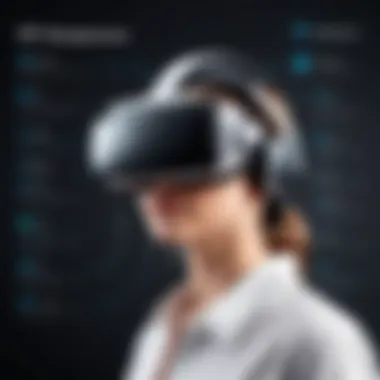
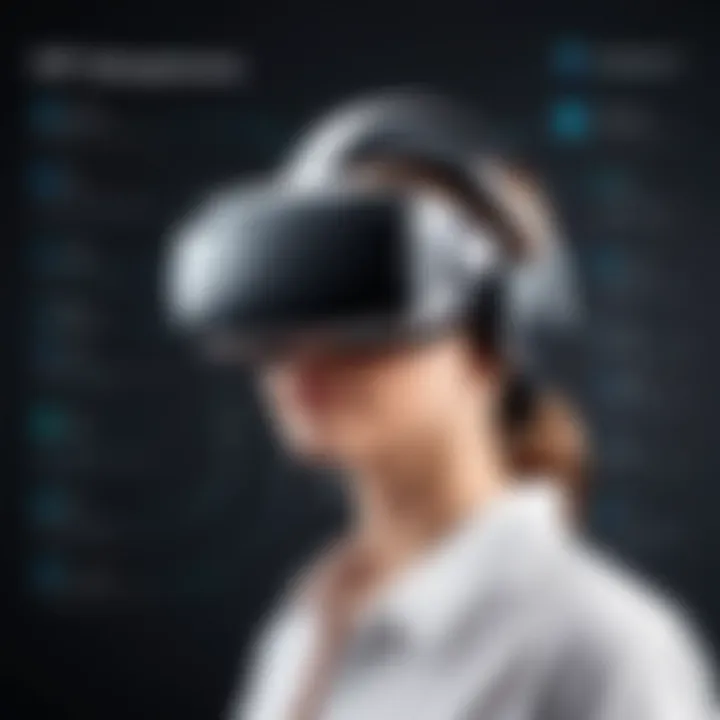
On the other hand, the cost. It is nearly double that of the Oculus Quest 2. Considering the added complexity and financial investment, it’s more suited for dedicated users and professionals than for everyday gamers.
Sony PlayStation VR
Integration with Gaming Consoles
The Sony PlayStation VR leverages its strength—integration with console gaming. Pairing seamlessly with PlayStation 4 and PlayStation 5, it provides a broad catalog of games previously only available in traditional formats. Users can jump from controller to headset with minimal fuss, thanks to the well-designed interface and support system from Sony.
However, its lower resolution compared to newer headsets, at 1920 x 1080, can be a drawback for some. Gamers have noted the visuals feel somewhat less crisp, especially when interacting in detailed environments.
Market Position
The market position of the PlayStation VR is notable; it appeals primarily to console gamers looking for an affordable entry into virtual reality. Its competitive price makes it accessible too. Many users enjoy its cult status as it has garnered a strong user community.
Nevertheless, the aging technology compared to newer headsets shows the limitations in its capabilities, and there are concerns around whether its hardware can keep pace with next-gen gaming demands.
HTC Vive Pro
Professional Usage
HTC Vive Pro targets a professional market, often used in corporate settings for training simulations and design visualization. Its premium build quality speaks to its purpose; high-resolution display and spatial audio make it ideal for enterprise applications that demand precision and detail.
The defining factor is its extensive compatibility with various professional software applications. However, this level of professionalism comes at a steep price, making it less appealing for casual users.
Cost-Benefit Analysis
Looking at the cost-benefit analysis of the HTC Vive Pro, while the initial investment is significant, the device's functionality can justify the expenditure for businesses. Enhanced productivity in professional training leads to higher returns on investment over time. However, for individual consumers, the high cost could outweigh the benefits as alternatives exist that offer more versatility at a lower price.
In summary, the comparative analysis of these headsets clarifies how each serves distinct user needs. While Oculus Quest 2 caters well to casual users, the Valve Index excels for enthusiasts. Sony PlayStation VR holds court in the console arena, and the HTC Vive Pro caters specifically to professional environments. Each headset presents unique characteristics worthy of consideration for anyone in the IT field or tech enthusiasts contemplating their next VR venture.
Usability and User Experience
Usability and user experience play a pivotal role in the adoption of virtual reality headsets. In a tech landscape Bombarded by options, the ease with which a user can interact with a device often determines whether it gains traction among its intended audience. Good usability leads to a satisfying user experience, ensuring that professionals can engage effectively with complex applications without excessive frustration. For VR headsets, this means designs must prioritize intuitive interfaces, satisfactory performance, and comfort.
Comfort and Ergonomics
From novice users to seasoned professionals, the comfort of wearing a VR headset can be the difference between a compelling or an irritating experience. Ergonomics addresses this by ensuring that headsets fit snugly without causing too much pressure on the face or head. It's not just about weight distribution; the materials used in headsets also matter. For instance, soft padding can significantly enhance comfort during extended use. This aspect is crucial in professional settings where users might need to wear headsets for hours on end, such as in training or simulation scenarios.
Key factors contributing to comfort include:
- Weight: Lighter headsets minimize fatigue during long sessions.
- Padding: Quality materials can make all the difference in how long you can wear the device comfortably.
- Ventilation: Good airflow prevents overheating, which can be quite distracting.
Users have often reported that a headset's overall comfort level influences their willingness to engage in VR experiences and, subsequently, their performance in specific tasks, making it a vital consideration in both development and selection processes.
Adjustability Features
Adjustability features in VR headsets directly affect how well a device fits various users, enhancing the overall user experience. The ability to customize a headset, whether it’s through adjusting the lenses for improved visual clarity or altering straps for a snug fit, empowers users to tailor their experiences to their personal preferences. This adaptability can make a significant impact in professional environments where every bit of detail counts.
Key adjustability aspects include:
- Lens Distance Adjustment: Helps accommodate users with different vision needs, allowing for a clearer image without unnecessary strain.
- Head Straps: Adjustable straps ensure stability, critical for maintaining focus during immersive experiences.
- Inter-pupillary distance (IPD) adjustments provide a clear central view by aligning the optics with the user’s eye spacing, reducing discomfort and distractions.
The more customizable a headset is, the more likely it is to be embraced by a diverse user base. This inclusion fosters a more productive environment in professional scenarios, where varying levels of comfort can drastically affect outcomes.
By focusing on these elements, designers and manufacturers can create VR headsets that do more than just showcase technology; they offer genuine user-centric solutions that cater to professionals.
Applications of VR Headsets in Professional Settings
The integration of virtual reality in professional realms marks a significant shift in how certain tasks and training modules are approached. With immersive environments that allow users to engage directly with content, VR headsets have found their way into various industries. This application of technology is essential not just for increasing productivity but also for enhancing learning experiences and collaboration. The benefits are substantial, and the implications for efficiency and effectiveness could change the landscape of professional services.
Training and Simulation
One of the most powerful utilizations of VR technology is in training and simulation. Whether it's in healthcare, aviation, or any high-stakes field, the ability to recreate real-life scenarios provides a safe space to practice skills without real-world consequences. For instance, medical professionals engage in simulated surgeries through VR, honing their abilities and decision-making skills. Such simulations facilitate deeper understanding and retention. The novelty of being fully immersed means that practitioners are likely to learn more than through traditional means.
Moreover, businesses can run cost assessments comparing traditional training programs with VR-enhanced training modules. The cost-effective nature often places VR as a leading alternative, especially if the need for physical materials and venues is reduced. Companies like Walmart have already implemented VR for training purposes, showing positive results in both employee engagement and knowledge retention.
Here are some key benefits of VR training and simulations:
- Safe Learning Environment: Mistakes are part of learning but can be costly. VR provides the chance to learn without the risks.
- Repeatability: Users can repeatedly practice the same scenarios to master skills without additional costs.
- Feedback Mechanisms: Real-time feedback further enhances the learning experience, besting traditional methods where feedback could take time.
In short, training and simulations using VR headsets empower professionals to efficiently develop, practice, and refine critical skills and techniques necessary for their fields.
Remote Collaboration and Meetings


In our increasingly globalized workforce, remote collaboration has become indispensable. VR headsets offer an innovative avenue for virtual meetings and collaborative work. Imagine a world where colleagues, regardless of their location, can meet in a virtual space that mimics their office. Such immersive environments help bridge the gap of physical distance, enabling teams to feel more connected and engaged.
Participating in meetings through VR not only adds a layer of interaction that video calls lack but also fosters a sense of presence. For instance, during brainstorming sessions or collaborative projects, spatial understanding of ideas can lead to enhanced productivity. Users can manipulate 3D models or situate themselves in various environments, which is particularly useful for design and engineering professionals.
Some noteworthy benefits include:
- Enhanced Engagement: Participants are likely to be more focused due to the immersive nature of VR.
- Visual Collaboration: Teams can work directly with 3D models, which helps in understanding complex concepts or designs.
- Reduced Travel Costs: Holding meetings in a virtual space eliminates the need for travel, saving both money and time.
"The future of work isn't just about flexibility; it's about enhancing the way we collaborate and connect. Virtual reality provides the tools to do just that."
As organizations continue to reimagine remote work, leveraging VR for collaboration could very well lead to better teamwork and sharper project outcomes, thus underscoring the utility of VR headsets in professional settings.
Future Trends in VR Headset Development
As we look to the future, it’s crucial to understand how the VR headset development landscape will evolve. The integration of advanced technologies and shifting user preferences are driving this change, allowing for more immersive experiences and broader applications. From education to healthcare, the need for versatility in VR technology is paramount. Key factors influencing these trends include the integration of artificial intelligence and machine learning and the expansion of VR across various sectors.
Integration with AI and Machine Learning
Artificial Intelligence is not just a buzzword anymore; it has practical implications in VR. By incorporating AI and machine learning, VR developers aim to tailor experiences to individual user needs. This means that headsets could potentially learn from user interactions and make real-time adjustments to enhance the experience. For instance, if a user frequently gravitates towards certain types of content or environments, the system might automatically present similar options in the future.
Moreover, voice recognition technology is also on the rise. Integrating AI with voice commands can significantly improve usability. Imagine walking into a virtual scenario and, without using your hands, you can instruct the system to change the environment or call up specific data – this could redefine the ways users interact with VR.
Potential for Expansion in Different Sectors
The adaptability of VR technology hints at its vast potential across a myriad of sectors. Exploring how this technology functions in various professional domains provides insight into its versatility. Each sector offers unique challenges and opportunities, which VR is poised to address.
Healthcare
In healthcare, VR is being explored for its application in surgical training and patient therapy. One standout characteristic is its ability to simulate real-life scenarios for training without risking patient safety. Surgeons can perform virtual operations, helping hone their skills before entering the operating room. This feature is particularly beneficial for medical professionals who must practice complex procedures.
However, while the benefits are considerable, some drawbacks are evident. The initial investment in high-quality VR systems can be steep, leading some institutions to hesitate. Yet, as technology progresses and costs decrease, the adoption is likely to increase, yielding better-trained professionals and improved patient outcomes.
Education
Education is another area ripe for VR implementation. The immersive nature of VR allows educational institutions to create engaging learning environments that can bring subjects to life. With VR, students can experience historical events or explore the depths of the ocean without leaving their classrooms. This hands-on approach caters particularly well to visual and kinesthetic learners.
Nevertheless, challenges remain in terms of accessibility. Not every student has access to quality VR headsets. Addressing these issues of equity is essential to ensure that all students benefit from such innovations in their education.
Entertainment
In entertainment, VR is transforming how content is consumed. The ability to step into a game or experience a film scene is revolutionizing the industry. Users have the unique opportunity to interact with narratives actively, often described as being part of the story itself. Also, the growing catalog of VR games and experiences signifies that the market is becoming increasingly robust and varied.
However, a common concern is the potential for motion sickness in users. Developers constantly work on optimizing experiences to minimize discomfort. As these issues get resolved, the entertainment sector can expect even broader adoption of VR technology.
In summary, the future of VR headset development is bright, with AI and machine learning paving the way for personalized user experiences. Sectors like healthcare, education, and entertainment are primed for expansion, offering unique advantages that could reshape industry standards. Understanding these trends is vital for IT professionals looking to harness the power of VR in their respective fields.
Closure and Recommendations
As we draw this exploration of VR technology to a close, the significance of evaluating and understanding your virtual reality needs cannot be overstated. This overview of the latest headsets of 2021 highlights how fast-paced this tech field can be and emphasizes the importance of tailored solutions for both personal and professional settings.
Choosing the right headset isn't just a matter of picking the newest model on the market; it involves careful consideration of various practical aspects. The selection process should take into account how you intend to use the headset—whether it’s for immersive gaming, professional training sessions, or even educational purposes.
More than just an investment in hardware, the right VR headset can significantly enhance productivity, foster collaboration, and lead to greater user satisfaction. In industries like healthcare and education, where VR is emerging as a vital tool for training and simulation, having the proper equipment is key.
"The right VR device can shift paradigms, revitalizing training and learning modalities across sectors."
Yet, with great options comes the need for thoughtful evaluation. Consider these key elements:
- Comfort and Fit: Ensure the headset feels right to wear. Extended use can lead to discomfort; choose one with adjustable features and ergonomic design.
- Technical Specifications: Don't just focus on brand names; analyze display resolution, tracking capabilities, and audio quality. How these features align with your needs is essential.
- Content Availability: Assess the ecosystem of applications and games available for each headset. Some models excel in certain domains.
Ultimately, solid recommendations stem from a clear understanding of your requirements and the intended use of the technology. Your choice should align not only with current trends but also with your long-term objectives.
Evaluating Your Needs
When it comes to picking a VR headset, doing your homework is crucial. Instead of falling for the flashy marketing or the latest buzz, start by asking yourself some pointed questions:
- What will you primarily use the VR headset for? Is it gaming, professional training, or some other application?
- How much space do you have? Some systems require more room for movement than others.
- How important are comfort and usability for extended sessions?
- What is your budget? Will you need accessories to enhance your experience?
Taking the time to evaluate these aspects can save future headache. Each VR headset offers unique advantages and trade-offs, so finding the right one tailored to your specific needs can make all the difference in enjoying or even benefiting from the immersive experience.
Begin your evaluation by creating a checklist of must-have features and a wish list of additional ones. This strategy provides a clearer framework as you navigate the myriad options.
Selecting the Right VR Headset
Once you have a handle on your needs, it’s time to explore the options available on the market. Look beyond surface level comparisons and consider diving into the nitty-gritty of each model. Here are some practical steps to guide your selection:
- Research and Reviews: Websites like Reddit and tech forums can provide insights from real users about their experiences with different headsets.
- Hands-On Testing: If possible, try before you buy. Many electronics stores have demo setups, or you might find local meetups featuring VR equipment.
- Compatibility: Check if the headset works with your existing devices, whether it's PC, gaming consoles, or mobile tech. Not all headsets are compatible with all setups.
- Future-Proofing: Tech moves lightning-fast. Consider models that offer potential upgrades or those that promise support for upcoming technologies.
By equipping yourself with the right knowledge and tools, you’ll be in a strong position to select a VR headset that not only meets your needs but enhances overall experience. Always weigh the pros and cons based on your use case and pivot according to feedback and trends in the VR landscape.



